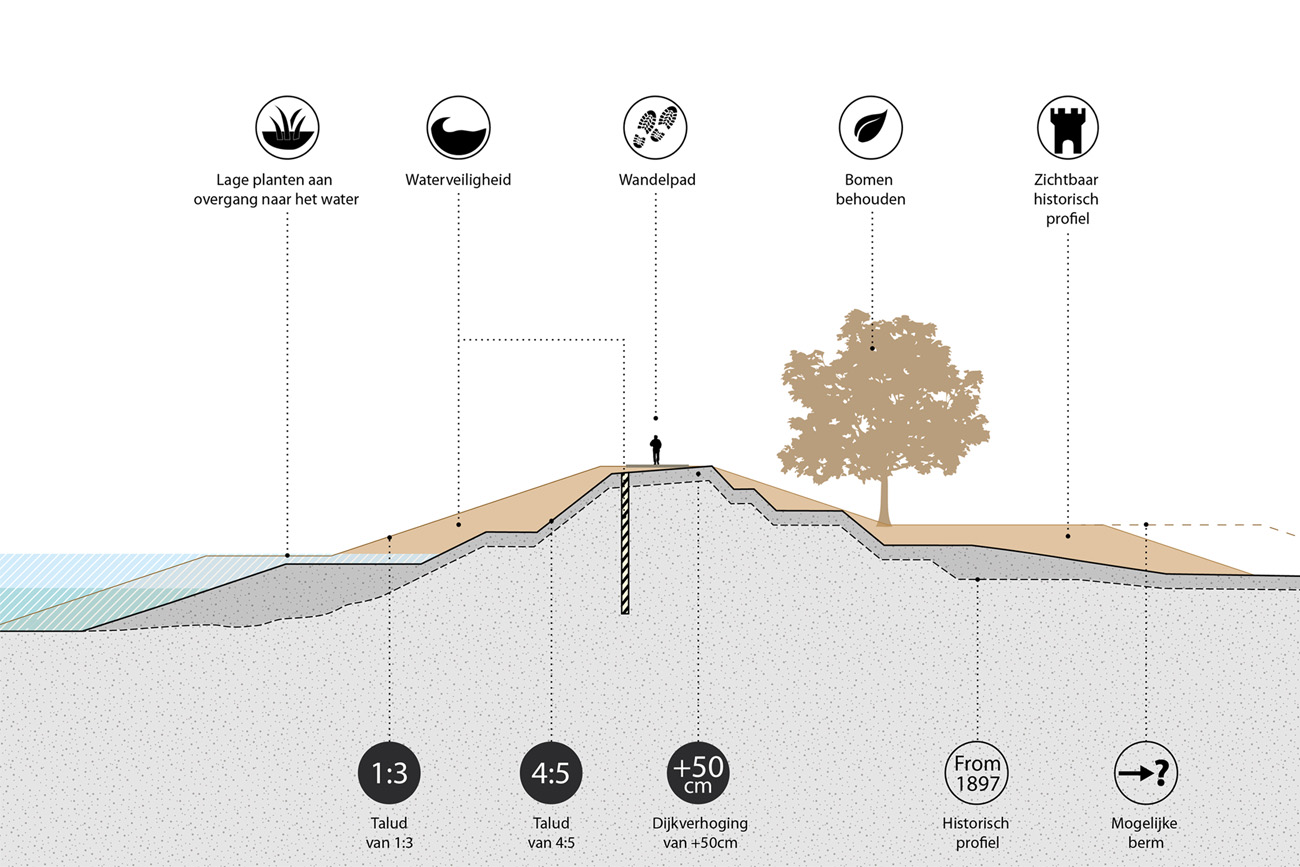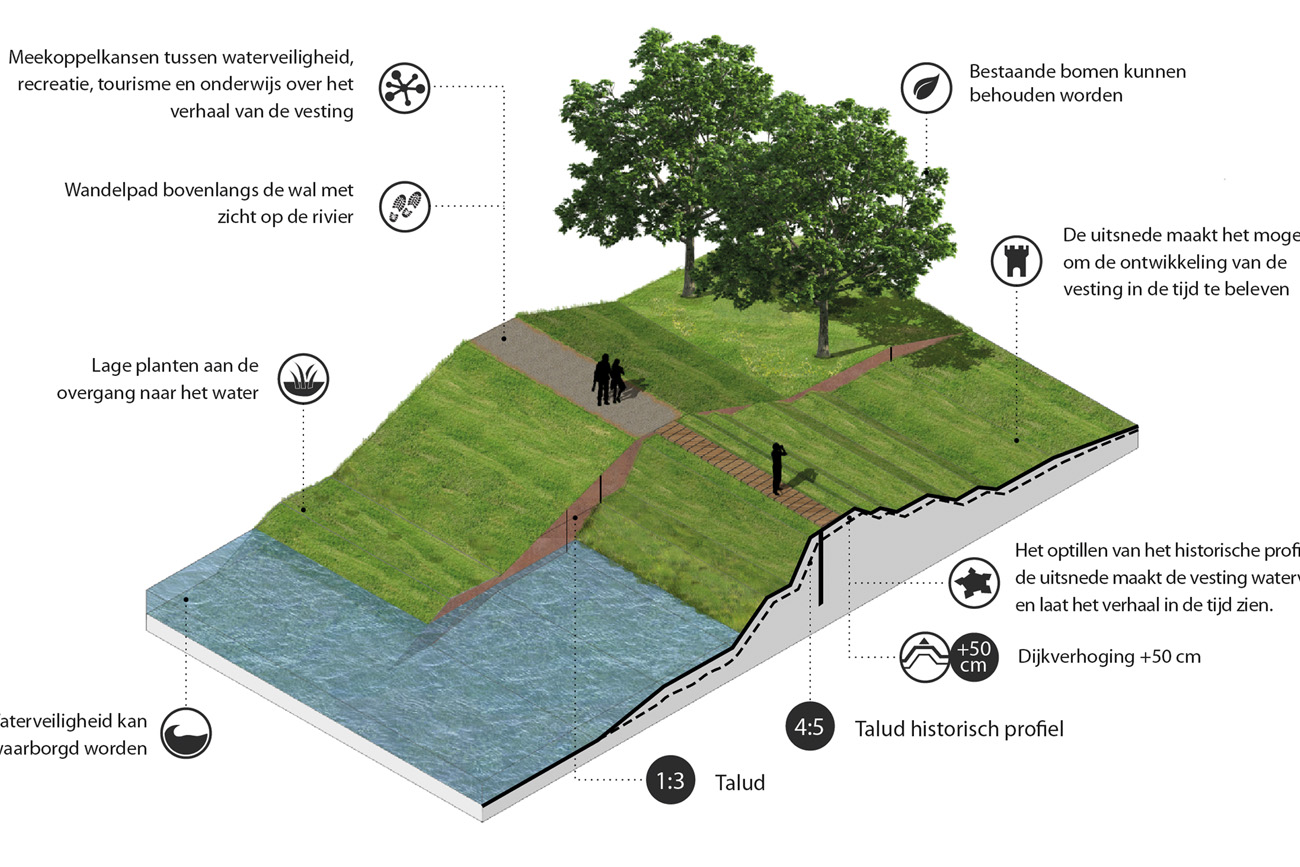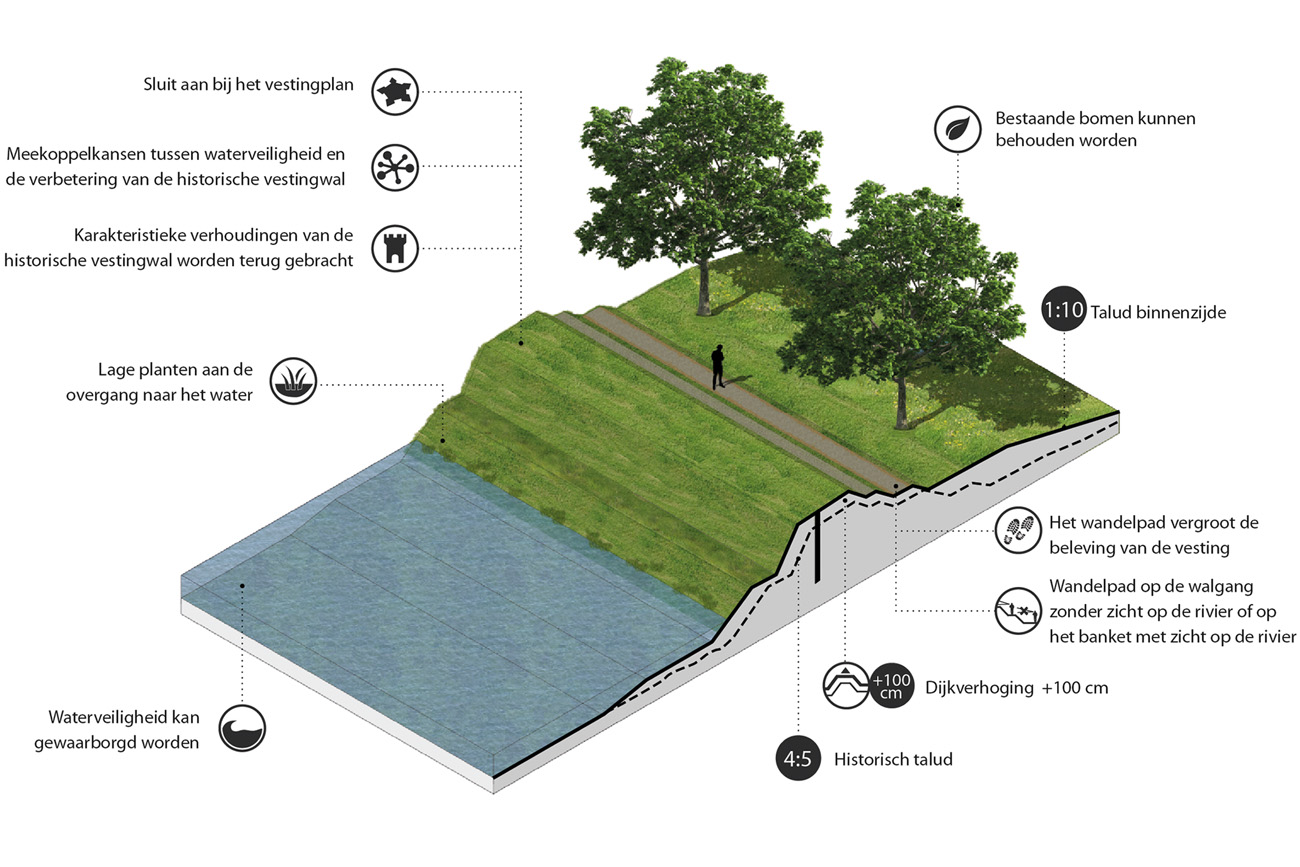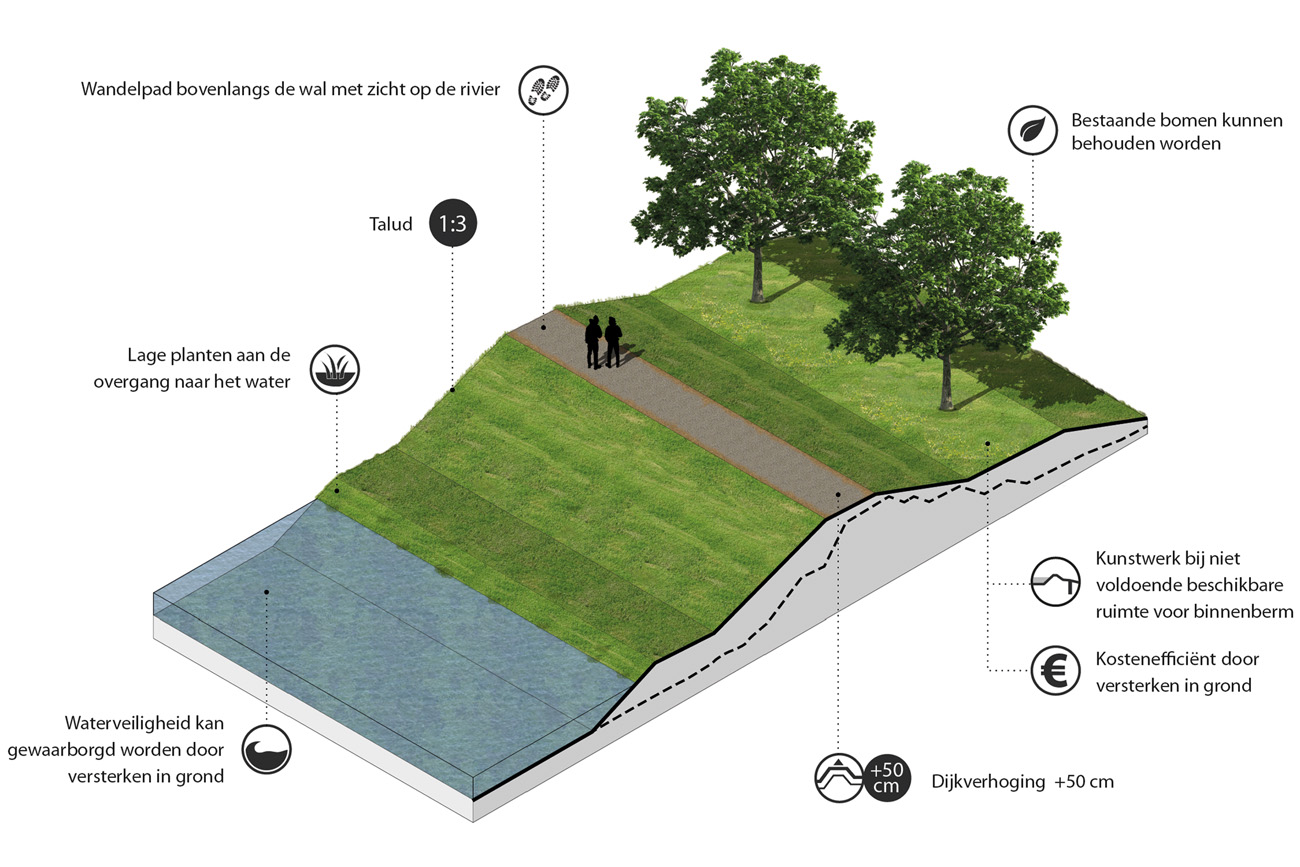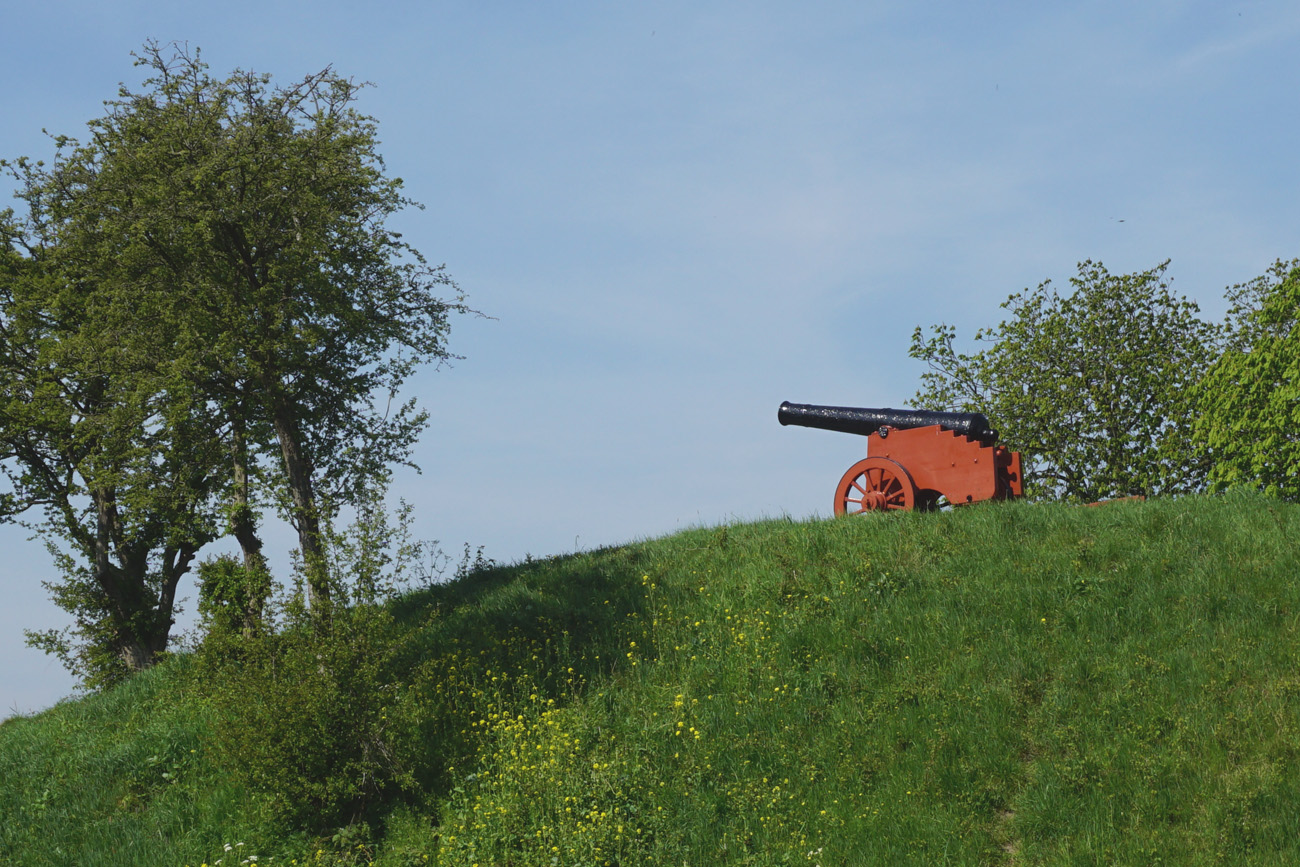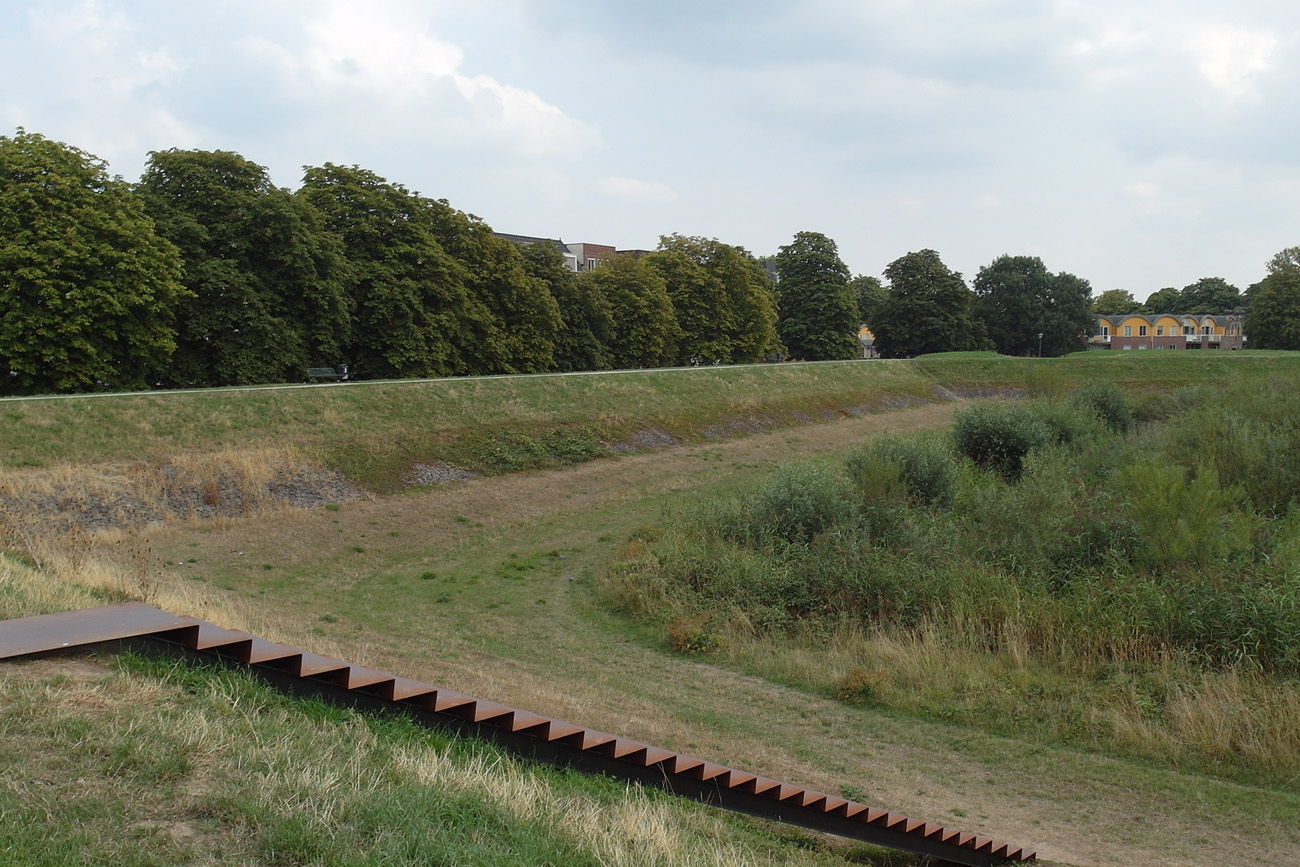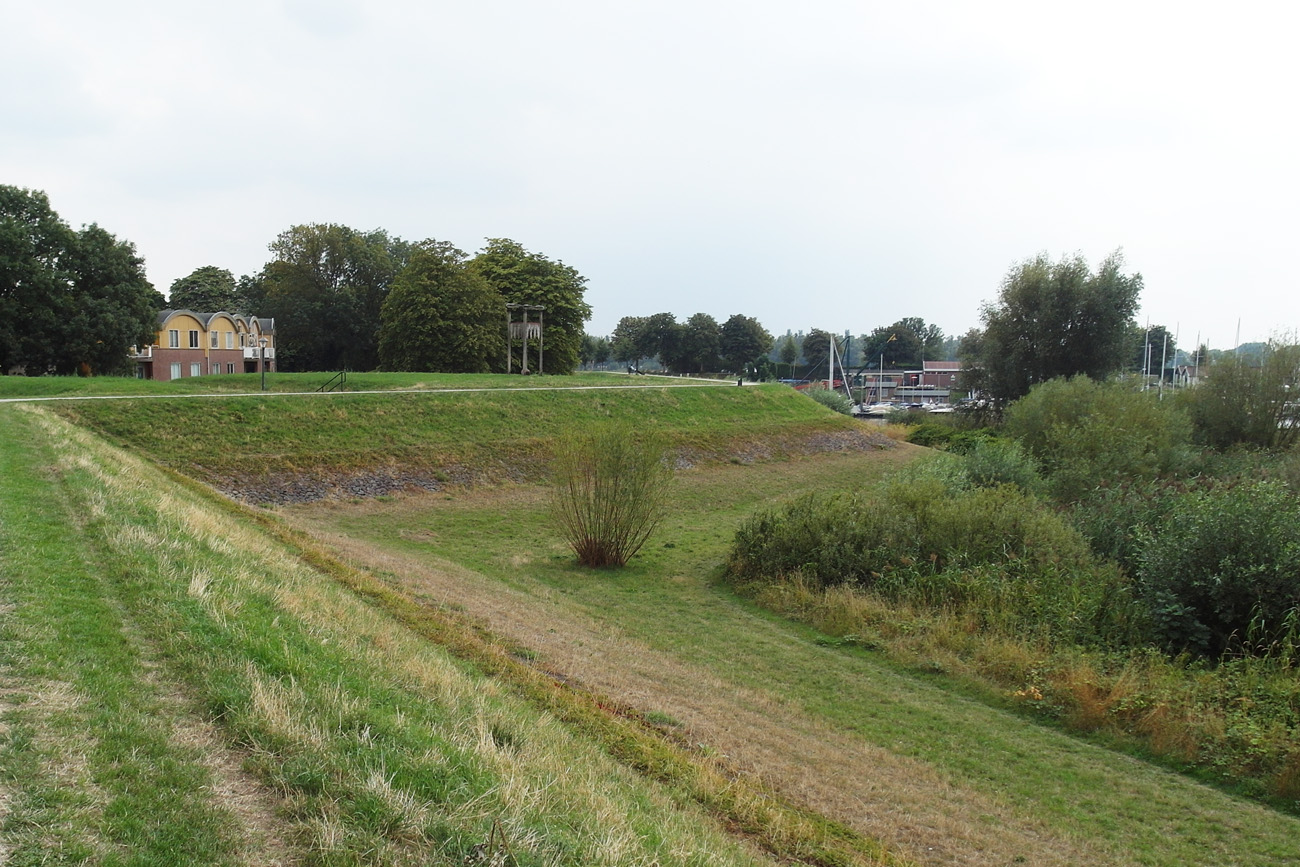Gorinchem fortress, The Netherlands
Gorinchem Fortress
Design alternatives for the integral dike enforcement of the fortress of Gorinchem
The fort Gorinchem has, next to the (historic) function of a military fortress, the function of flood defence and is part of dike ring 16 and of the Old and New Dutch Water Line. While in the past the military function of the fort was the most dominant for the design of the walls, the function of flood defence became more and more guiding for the shape of the fort over time. During this transition, most of the characteristics of the historic profile of the historic fortress got lost.
In the ‘fortress plan Gorinchem’ (‘vestingplan Gorinchem’) the wish to recover the historic profile has been expressed. The recognisability of cultural-historically valuable elements of the fortress becomes especially important with the UNESCO nomination of the New Dutch Waterline, of which Gorinchem is part of. But how to recover the historically valuable elements of the fort with the additional dike enforcements needed in the future?
To answer this question, Defacto did a research-by-design exploration, commissioned by the Municipality of Gorinchem, the Province South-Holland and the Water board Rivierenland. During integral work sessions with experts, different possibilities for the dike enforcement in relation to the cultural historic profile of the fort have been explored. The possible profiles vary from the reconstruction of the historic fort, the reference to the historic situation in selected places to the expression of the currently dominant function of flood defence.
This inspirational document stands in the beginning of the whole dike enforcement trajectory and is a first step towards an integral approach.
Client: Municipality of Gorinchem, Province of South-Holland, Waterschap Rivierenland
De vestingwal van Gorinchem heeft naast de (historische) functie van militair vestingwerk ook een functie als waterkering en maakt zowel deel uit van dijkring 16 als van de Oude en Nieuwe Hollandse waterlinie. Waar oorspronkelijk de functie als vestingwerk dominant was voor het ontwerp van de wal, is de functie als waterkering met de tijd steeds bepalender geworden voor het uiterlijk van de wal. Daarbij is de kenmerkende profielopbouw van de militaire vestingwal door de jaren heen, grotendeels verloren gegaan.
In het ‘vestingplan Gorinchem’ is de wens benoemd om de vestingwal ‘terug in profiel te brengen’. Het belang van de herkenbaarheid van cultuurhistorisch waardevolle elementen van de vesting is extra relevant in het kader van de UNESCO-nominatie van de Nieuwe Hollandse Waterlinie, waar de vesting Gorinchem deel van uitmaakt. Maar hoe breng je de cultuurhistorisch waardevolle elementen van de vesting terug terwijl de dijk in de toekomst juist verder moeten worden versterkt?
Om deze vraag te beantwoorden heeft Defacto, in opdracht van de Gemeente Gorinchem, Provincie Zuid-Holland en waterschap Rivierenland, een ontwerpende verkenning uitgevoerd. Daarbij zijn tijdens integrale werksessies verschillende mogelijkheden voor dijkversterking in relatie tot het cultuurhistorische profiel van de vestingwal samen met experts verkend. De mogelijke profielen variëren van het reconstrueren van de historische wal, het op sommige plekken refereren aan de wal tot het benadrukken van de hedendaagse dominante functie als waterkering.
Met het opstellen van dit inspiratiedocument aan de voorkant van het dijkversterkingstraject, is de eerste stap gezet voor een integrale aanpak van de dijkversterking.
Opdrachtgever: Gemeente Gorinchem, Provincie Zuid-Holland, Waterschap Rivierenland


